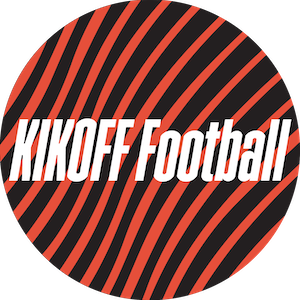Football Conditioning: The best type of recovery is to move again
What?
After a training session of sprints, jumps and lots of changes of direction we usually feel like we need a day off the next day to give our body a chance to recover.
Whilst there is some logic to this thinking, I’m a huge believer that the best type of recovery (outside of quality sleep and nutrition) is to move again.
More often than not, doing nothing the following day leaves you a little stiff and tight when you return to training the next day.
A good way to combat that is to do some extended pool work, medicine ball circuits, mobility circuits or tempo runs on your days in between hard sessions (I’d still allow around 24 hours between sessions).
My favourite is tempo runs.
Why?
The reason being that they have the potential to improve aerobic fitness whilst also facilitating the recovery process long term.
The speed of the runs (approx. 70-75%) ensure players are working at a relatively decent power output and also aren’t having to complete 40-60 min long runs which can put additional load on joints and tendons – delaying recovery further.
The speed of the run is light enough not to feel like an overly hard session and prevent additional stress to the bodies central nervous system but it is challenging enough for the body to see improvements in aerobic fitness.
Remember, training is cumulative so when performing this additional work the body will begin to tolerate more volume, which has benefits long term as the body will be able to recover quicker and withstand higher volumes.
Of course, these benefits come when sessions are planned correctly and carried out with quality.
That means that individualisation of each player may need to be taken into account when planning and that the player must treat the session as serious as he did his team training session for optimum quality.
How?
Nonetheless, there are some guidelines to help you plan your session on your own:
- Do tempo runs on off days between training sessions or 24-48 hours after a match
- Start with lower volume (1x10 reps at 80-100m/per rep) and work your way up each week to work out what volume works best for you
- Use appropriate speed 70-75%
- Use appropriate rest periods: the rest ensures power output can be repeated on the next rep. 15s work = 45s rest
- Monitor power output on each rep. Easiest way is to give yourself a time to get between to points (80m in 15s exactly – if getting there too quick, slow down, if getting there too slow then speed up or stop the work out) The point isn’t for a best time it is to go at same tempo repeatedly.
- Progress appropriately. Options include, increase distance, more reps or increased distances.
- As an option perform stretches or core work during rest period
- Relax body during each run and focus on running technique
- Perform 10-15 minute warm up, mobility and activation prior to runs
- If injured, similar workouts can be carried out on bikes, elliptical, rower: work for 15-20 secs at 75% then recover 40-45 secs and repeat.
If you aren’t able to time reps or measure distances then a very simple sample session may look like this: Run diagonally corner flag to corner flag at 75% then walk the width of the pitch as recovery.
Complete 1x10 reps, increase each session until 15 reps then progress to 2x8 reps with 2 min rest between sets.


